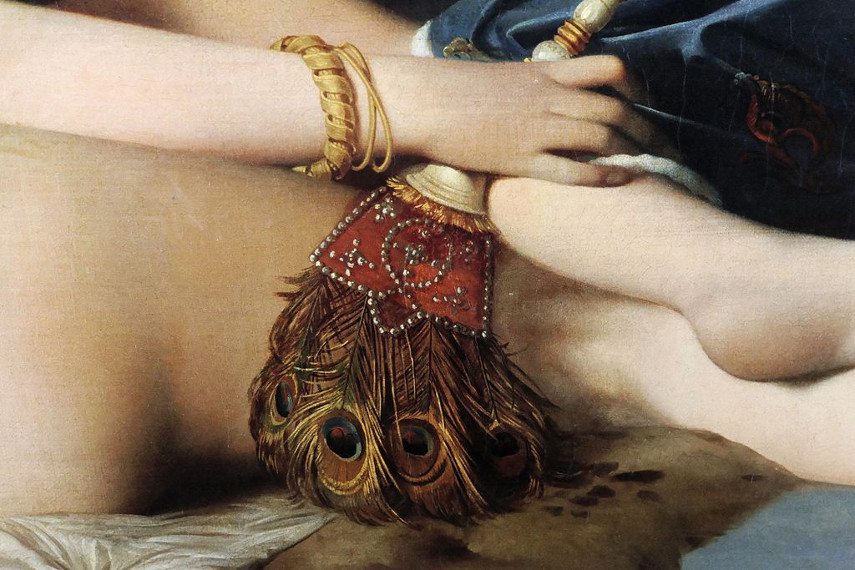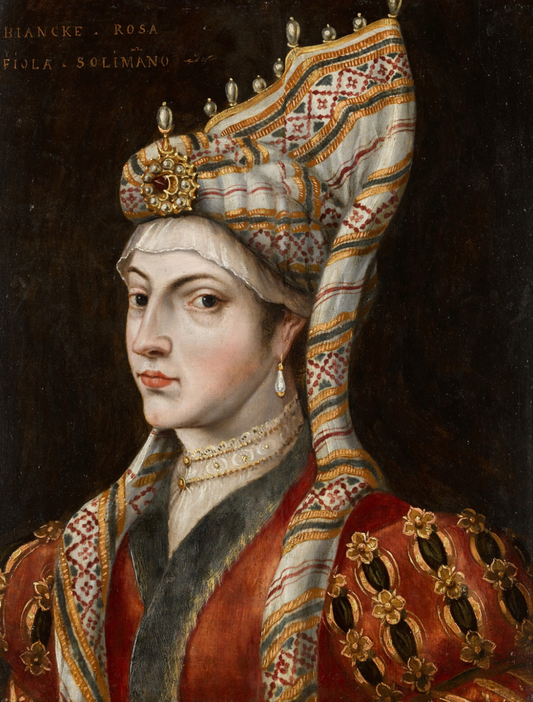So often in design that draws on Eastern influences, cliché abounds and originality and innovation are wanting. In the realm of interior design and architecture one regularly comes across derivative takes on the orient which, while at times charming, tend to ignore the nuances involved in the refinement of an Eastern aesthetic.
A sofa upholstered with kilim woven fabrics, designed by Mica's firm MAC II.
Mica at home in New York City, photographed by Horst.
Not so in the world of Mica Ertegün, a design icon who drew on the East – from the vast influences of the Ottoman Empire to the greater ancient Levant. Hers was not a world of camels, souks, samovars, and oriental fantasy; rather, Mica reimagined and extracted elements of Eastern design – a carefully placed pearl inlay wall sconce from Syria, a silver water pitcher inspired by hamam bathing, a low seated sofa that subtly recalled Ottoman receiving rooms – and wove them into a rich and textured context that was entirely her own.
A wall of fantastic antique calligraphy in Mica's home in Bodrum, Turkey.
Mica's was not a world of camels, souks, samovars, and oriental fantasy; rather, she reimagined and extracted elements of Eastern design.
Bill Blass' Sutton Place apartment, decorated by Mica in the 1980s.
Ancient elements peek through in Bill Blass' apartment.
Mica’s personal history indelibly shaped this context - to magical effect. A Romanian-born aristocrat who escaped post war Communism; she married the late Ahmet Ertegün in 1961. Ahmet was the co-founder of Atlantic Records, and their life together gave Mica her first deep exposure to Turkey, her husband’s country. Mica and Ahmet socialized with New York City’s glitterati of the 60s and 70s – from Andy Warhol to Mick Jagger – and in the summers, entertained in their villa in Bodrum, Turkey. Mica is slated with making the coastal village a hot-spot for the fashionable bohemians of the era. The couple immersed themselves in the cutting-edge; while Ahmet nurtured the musical careers of the greats like Ray Charles, Aretha Franklin, Bobby Darin, Led Zeppelin, and the Rolling Stones, Mica was getting noticed for her unique design work. Commissions from Bill Blass, the Carlyle Hotel, and Jerome Robbins followed suit.
Mica and Bill Blass, 1980s.
Mica and her business partner, Chessy Rayner.
Mica launched her interior design firm, MAC II, in 1967 with her business partner Chessy Rayner. To walk into one of Mica’s interiors – whether it was a New York City penthouse, an Ottoman style Bosphorus yali, or a Colonial house in Greenwich, Connecticut – was to inhabit her highly cultivated world; a blend of the contemporary and antique, the minimal and lavish, the esoteric and the inviting. Though she eschewed clutter, Mica’s spaces felt abundant and were resplendently filled with contrast – a kilim-upholstered settee next to 1970s lacquered black chairs, an antique Japanese screen hanging above a cognac leather couch; a leopard stenciled suede banquette leading out to open French doors. She was always conscious of how natural elements in a room could offset the richness of textures or the vibrancy of colors.
Low sofas and ottomans mix with Matisse and Bonnard. New York, 1978.
Mica's signature ottoman pouf and vase are a subtle nod to the East in a New York City apartment.
Mica could manipulate her sphere of elements the way only a seasoned and critical designer could; distinguished by worldliness and restraint. She was known to have been an excellent treasure seeker in the Grand Bazaar of Istanbul, a favorite place of hers to source, and incorporated antique Ottoman pieces into her interiors in a fashion that was never campy and always felt contemporary. Mica herself had a mythic presence; she had strong features and a unique personal style, often wearing copper Ottoman belts over Halston gowns with great panache.
Mica and Ahmet Ertegun's Bodrum home.
Mica and her business partner, Chessy.
Mica's approach to design, finding the unconventional and embracing cultural clash and exchange, makes her truly emblematic of the spirit of the Levant; a melting pot of inspiration, Europe and the East, the contemporary and the ancient. Mica is a consummate inspiration for connoisseurs of the East and for anyone with a penchant for adventurous design. A LEVANT icon in every sense.















